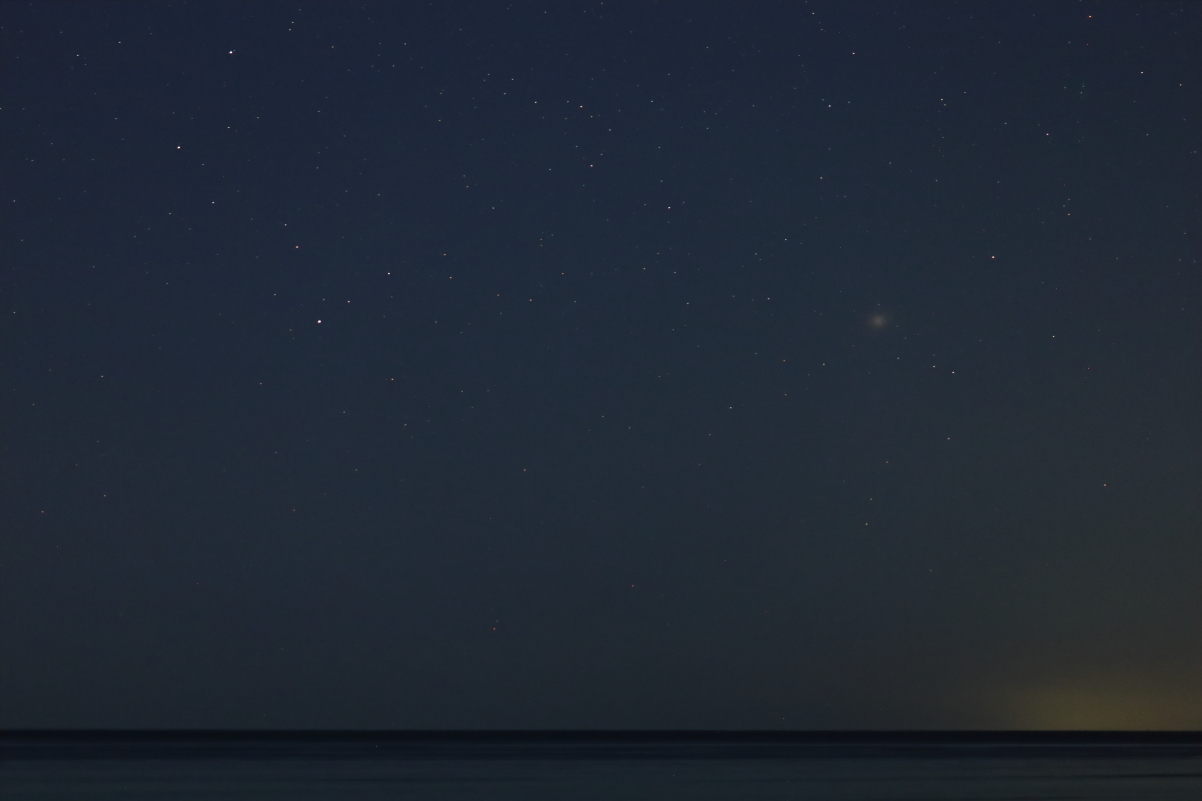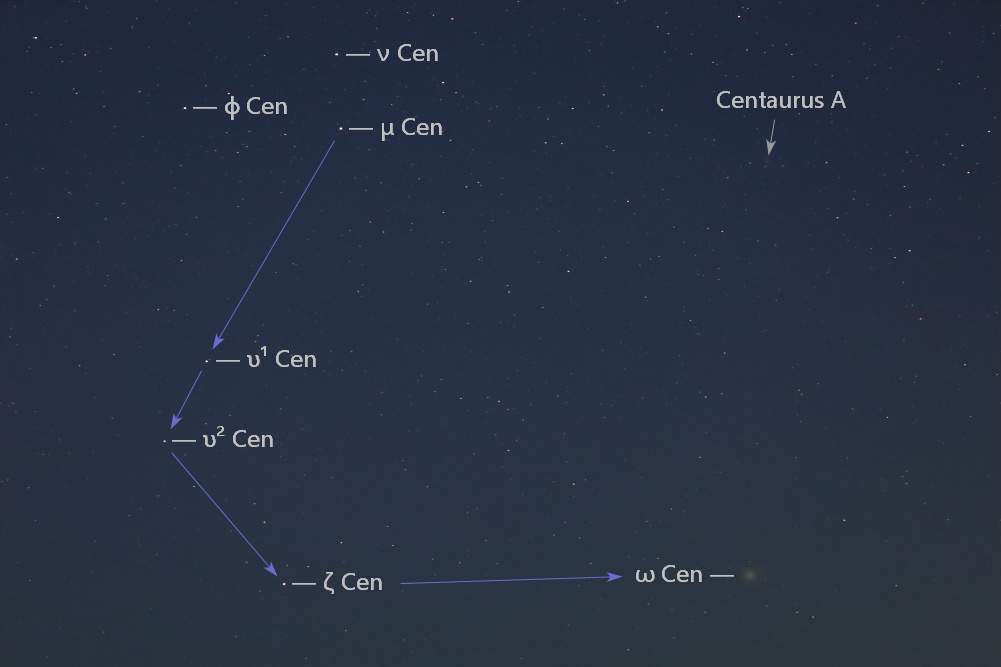Omega Centauri, East Point, NJ
January 27, 2022
For my annual sighting of the great
globular cluster Omega Centauri
(ω Cen, NGC 5139) from New Jersey, I went to East Point along
the north shore of the Delaware Bay on
January 27, 2022, despite a 29% illuminated,
waning crescent moon near the head of Scorpius. The weather was
clear and cold, 18°F on the water's edge at East Point, but as
low as 8°F in the forest north of Cumberland Pond on the way home. I
initially spotted
Omega Centauri with 15x56 binoculars at 4:18 am EST, then examined it
with a 115 mm apo spotting scope at 30 to 70x. At the low
altitude, no stars were resolved, even at 70x. It was not
visible to unaided eyes. I went back to East Point on
February 6, 2022, and with a very clear sky
along the southern horizon and no moon, I was able to see all of my
finder stars shown in the picture below with unaided eyes, but
not Omega itself. However, it was easy in 15x56 binoculars, and with
my 115 mm spotting scope at 70x, Omega looked granular rather
than the usual plain haze.
This image was captured on January 27 at 5:03 am EST, one minute
after meridian transit when Omega was at 3.5° apparent altitude and
180.3° azimuth, using a Canon EOS RP DSLM camera and a Canon 200
mm f/2.8L telephoto lens on a fixed tripod. It was exposed 4
seconds at f/2.8, ISO 3200 and 3600K white balance. Virtually no
processing was applied (a slight increase in contrast) and it's
uncropped for a field 10.3° wide x 6.9° high. The darker band at
the bottom is the Delaware Bay, the glow at the right edge of
the sea horizon is from Lewes on the coast of Delaware. Mouseover for
labels.
While there, I also did a little casual observing with the
15x56s, spotting galaxies M51, M81+82, M65+66, M104, planetary
nebula M57, and globular cluster M4 (weaker than
ω Cen despite its greater altitude, about 13°, but closer to the
moon). With the 115 mm spotting scope, I detected comet
C/2019 L3 (ATLAS) in Gemini, by then, low in the northwest. As I
neared home around 7 am, I was looking out the car window for
Venus above the treetops, but didn't spot it until I stopped at
Swede Run in Moorestown, NJ. It was much higher than I expected,
17° at 7 am. Once I was looking in the right direction, Venus
was bright and obvious in morning twilight, now 11% illuminated
and brilliant at
magnitude -4.6.
This is a separate image captured at 4:58 am EST
on
January 27, 2022,
three minutes before meridian transit when Omega Centauri
was at 3.5° apparent altitude and
179.4° azimuth, but this time, raising the view slightly to
include the
peculiar galaxy,
Centaurus A (NGC 5128), about 4.5° north
of (above)
ω Cen. It was taken with the same equipment as the
previous picture, but exposed 4
seconds at f/2.8, ISO 4000 and 3600K white balance. Virtually no
processing was applied (a slight increase in contrast and a
little vignette brightening). The primary image is
uncropped for a field 10.3° wide x 6.9° high, but on
mouseover, the swap image has been cropped to 38% of the
original linear dimensions for a field 4.0° wide x 2.6° high,
providing a slightly better view of Centaurus A. The blue
arrowed lines show the path I follow to find Omega. Starting at
the triangle of magnitude 3.x Phi, Nu and Mu Centauri, I slide
down to Upsilon 1 & 2 Centauri (nominally magnitude 4), then
down to Zeta Centauri, and finally, right to Omega. At magnitude
2.5, Zeta is the brightest of the group, but atmospheric
extinction at the very low altitude belies its brightness.
Omega Centauri, East Point and Moorestown, NJ, February 2018

